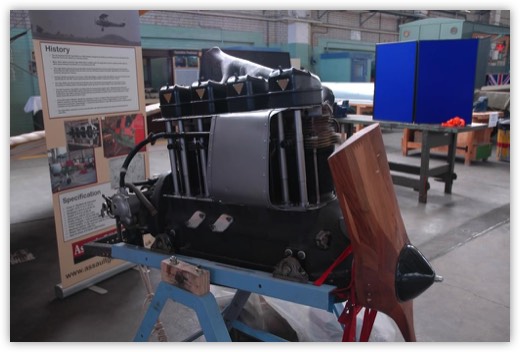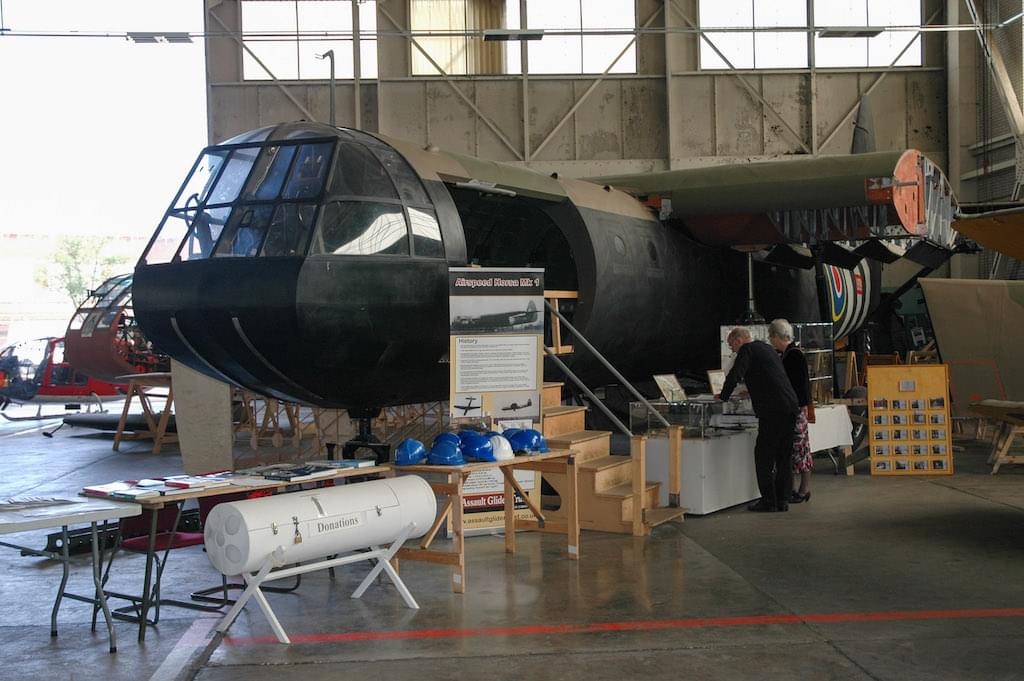
The Assault Glider Trust Airspeed Horsa has been built from scratch using original plans and by examining surviving aircraft components. Although the plans show a great deal of detail, they are mostly ‘assembly’ drawings and are often lacking measurements and sizes. This has required the volunteer workforce to do a lot of ‘reverse engineering’ in order to make everything fit together correctly. The aircraft has been built using original techniques and original parts have been incorporated wherever possible. Although the Horsa is being built to flight condition, it will not be flown.
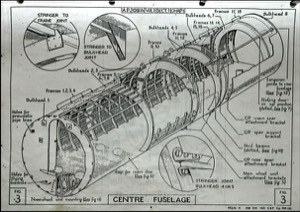
Horsa assembly drawing
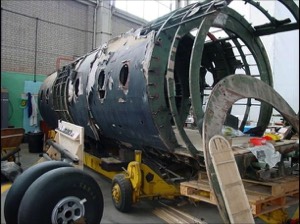
Original Horsa fuselage used to take measurements

The Horsa fuselage takes shape
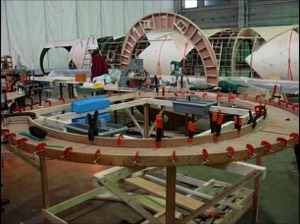
Horsa fuselage frame

The Trust established close links with the Silent Wings Museum (SWM) in Lubbock Texas USA, and an agreement was made to exchange aircraft components to allow the SWM to build a Horsa glider and to allow the Trust to add a CG-4A Waco assault glider to the collection at Shawbury.
The Waco arrived at Shawbury on Thursday 17 February 2005, and the task of restoring it to display condition started. The team of volunteers working on the Waco are highly motivated, have a wide range of skills and are always on the lookout for more volunteers to help them with the challenging task of restoration. Although the team have a comprehensive set of plans on microfilm, finding the right plan at the right time has been another challenge in itself! Often, the vital detail is missing and ‘reverse engineering’ is required to make the part fit, or just to establish how that part works.

Above: Period picture of a Waco CG-4A Assault Glider
In World War two, American glider pilots were trained at Lubbock, Texas. The City of Lubbock donated US$3M for the construction of a new Silent Wings Museum at Lubbock, and US$600,000 per year to run it. The new museum was opened in October 2002.
The American 17th, 82nd and 101st Airborne Divisions used about 350 British Horsa's on operations in Europe. The Horsa had a much greater load carrying capacity than the American Waco. The Silent Wings Museum intends to build a Horsa and as as part of a Trans-Atlantic exchange, they supplied us with Waco parts in exchange for Horsa sub-assemblies that we have constructed for them.
After preparatory work on the Waco on 21 November 2018, the Waco was collected by the transport team from the Dumfries & Galloway Aviation Museum on Friday 23 November 2018 and was unloaded at its new home the following day. The museum is now preparing the glider for public display.
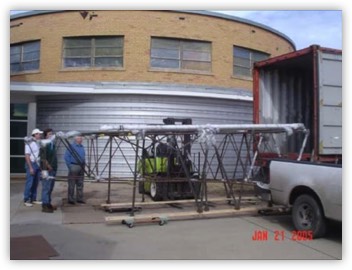
The Waco is packed at the Silent Wings Museum

The fuselage being loaded into a container
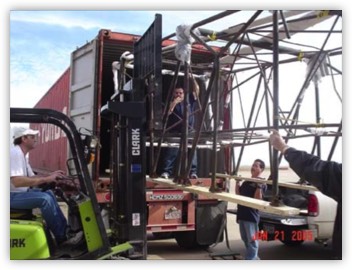
The fuselage being loaded into a container
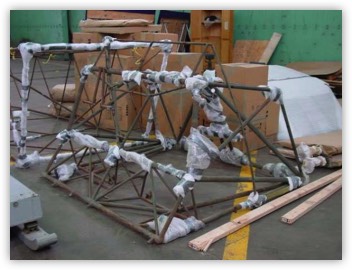
Compare this to the picture at the top of the page
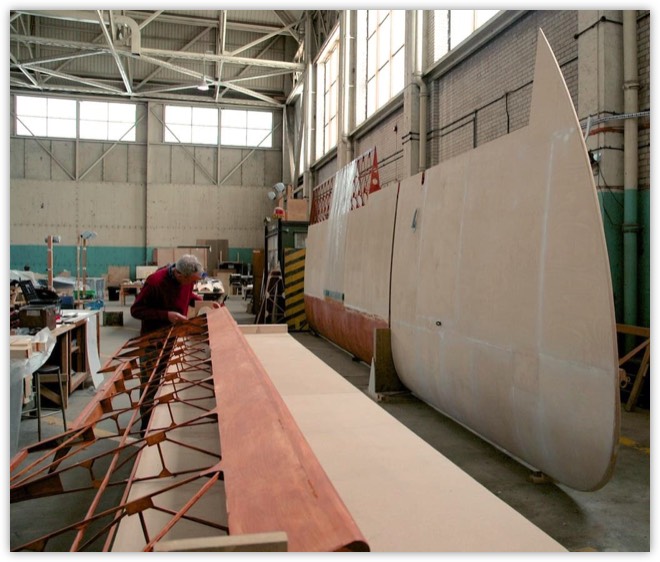
Above: A volunteer working on the new-build Waco wing at Shawbury in 2012
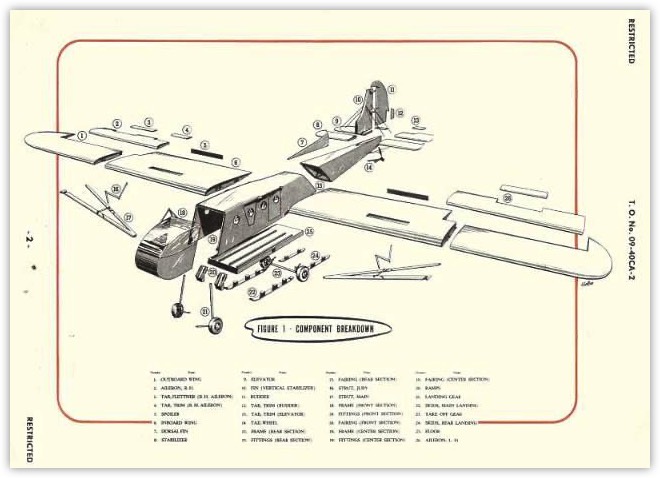
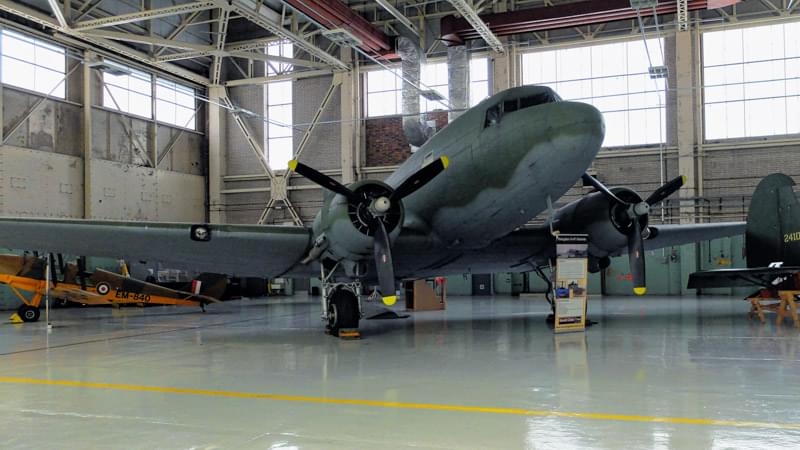
Dakota G-AMHJ - KG651 was presented to the Assault Glider Trust by Mr Stuart Powney on 7th November 2003 on behalf of Air Atlantique. This aircraft was built as a C47A at Oklahoma City in 1944, manufacturer's serial number 13468. It was delivered to the US Army Air Force on 30th May 1944 as 42-108962 but it was diverted to the Lend-Lease Programme. The aircraft became RAF serial number KG651 at No 45 Group at Montreal Dorval on 3rd June 1944.
This aircraft is being restored to non-flying condition, rigged for para dropping and glider towing. It is to be dedicated to Flt Lt (Judge) Tommy Grant DSO RAFVR, whose brilliant planning of the Pegasus Bridge operations on D Day allowed the glider pilots to land at night, precisely in the right place, and allowed the Oxf & Bucks LI to perform one of the most successful coupe de main operations of the war.
27 March 2014, the AGT Dakota left Shawbury to start a new life with the RAF Transport Command Memorial at North Weald who have a long term plan to return her to the air.
The Dakota has now moved to the RAF Metheringham Airfield Visitor Centre where it is on static display as part of the Metheringham collection.
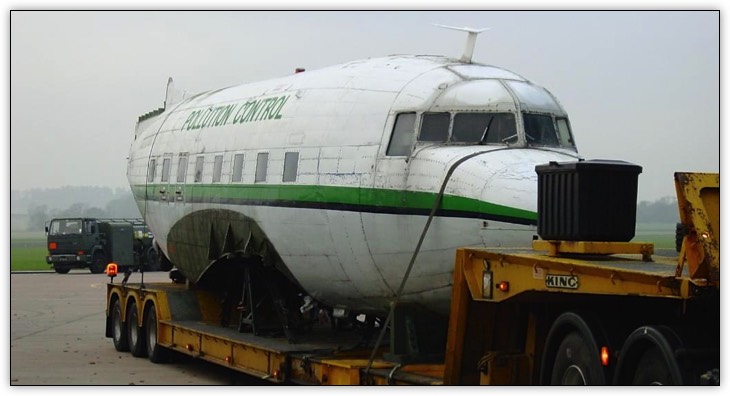
The Dakota arrives from Coventry Airport by road

KG651 as G-AMHJ at London Gatwick airport in 1968 when operated by Morton Air Services. Alan Brown via www.airliners.net

G-AMHJ in open air storage at Coventry in August 2003, some 3 months before the aircraft was presented to the AGT. Ian Haskell via www.airliners.net
Detailed History of KG651
- Built in Oklahoma City USA, allocated manufacturers serial number 13468 - 30th May 1944.
- Delivered to the US Army Air Force on 30th May 1944 as 42-108962
- Diverted to the Lend-Lease Programme as RAF Registration KG651 in Montreal - 03 Jun 1944
- Arrived in UK - 13 Jun 1944
- Delivered to 109 Operational Training Unit (OTU) Crosby in Eden, Cumberland - 26 Aug 1944
- 24 Sqn Hendon (Now the site of the RAF Museum) - 29 Aug 1945
- 1383 Transport Conversion Unit (T)CU Crosby in Eden - Mar 1946
- 1333 Transport Support Conversion Unit (TS)CU Leicester East - 23 Jul 1946
- Surplus to requirements, into storage with 22 Maintenance Unit (MU) Silloth, Cumberland - 1 Oct 1946
- Sold by the RAF to Air Prospectors - 21 Nov 1946
- Pan African Air Charters Ltd of South Africa - Registered ZS-BRW - 16 May 1947
- Cyprus Airways, named "Paphos" - Registered G-AMHJ - 06 Feb (year unknown)
- Iraq Petroleum Transport Co Ltd - 28 Jun 1956
- Hunting Clan Air Transport Ltd - 17 Apr 1957
- Hunting Clan Air Services Ltd - 9 Jan 1958
- Iraq Petroleum Transport Company Ltd, named "Qa:Petroleum" - 11 Jul 1958
- British United Airways Ltd - 15 May 1961
- Morton Air Services Ltd - 14 Jul 1962
- BUIA L (Dak Mk 6) - 1 Nov 1968
- British Island Airways - 20 Jul 1971
- Site Aviation Ltd - 08 Jan to 21 Jan 1974
- Macedonian Airways Ltd - 15 Mar 1974
- Humber Airways Ltd - 30 Dec 1974
- Pett Aviation Ltd - 1975
- Intra Airways - 30 Jun 1975
- International Air Cargo as SU-AZI - 5 Nov 1976
- Intra Airways as G-AMHJ again - 26 Aug 1977
- Jersey European Airways - 1 Nov 1979
- Field Aviation Ltd, East Midlands Airport - 23 Jan 1980
- Express Air Freight - Air Atlantique Coventry Airport - 29 Jan 1982
- Air Luton - Date unknown
- Air Atlantique - 1987
- Retired from service and stored at Coventry Airport - Jun 2000
- Presented to the Assault Glider Trust by Mr Stuart Powney on behalf of Air Atlantique - 7 Nov 2002
- Delivered to RAF Shawbury by road - 4 Dec 2003
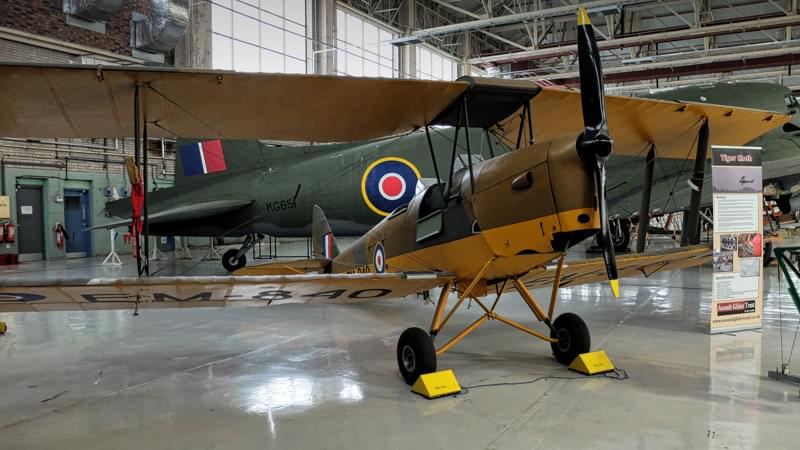
DH82A Tiger Moth EM840 was built by Morris Motors of Cowley in 1943 and It was delivered to 21 Elementary Flying Training School (21 EFTS) at RAF Booker on 6th July 1943. At 0955 hrs on 18th April 1944 EM840 was being flown solo by Corporal ASL Jenner 872865 of the Glider Pilot Regiment when it bounced heavily while trying to land, damaging the port undercarriage. Jenner correctly opened the throttle, went round again and safely landed the aircraft. The aircraft was sent for repair and never flew again on training before it was sold by the RAF on 25th September 1953. Although it was given the civil registration G-ANBY it was never overhauled for civil operation. The Trust has completed extensive restoration work, aided by a grant from the Heritage Lottery Fund, to bring the aircraft to the condition that you see today.
In 2014, the Tiger was gifted to the Army Historic Aircraft Flight (AHAF) and there are long-term plans to restore the aircraft to airworthy condition and to fly it as part of the historic collection.
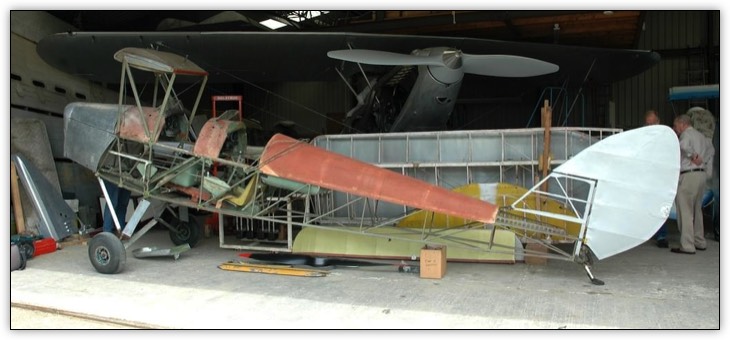
The Tiger Moth is inspected before being selected to join the AGT collection
21 EFTS at RAF Booker was mainly used for initial powered aircraft flying training for pilots of the Glider Pilot Regiment and for refresher courses on that type. Also, many Air Observation Post pilots of the Royal Artillery received their initial flying training at Booker. It is therefore appropriate that this particular aircraft should join the Trust’s Airspeed Horsa, Waco CG4A Hadrian gliders and Douglas C47 glider towing/para dropping aircraft at RAF Shawbury.
Any former pilot who flew from 21 EFTS and can find EM840 in his logbook would be most welcome to visit the Trust to renew acquaintance with the aircraft at our base at RAF Shawbury, near Shrewsbury. We would also be very pleased to meet ex Cpl ASL Jenner, his family or his friends. The Glider Pilot Regiment Roll of Honour shows that Sgt W.Roy Jenner was killed in action on Operation Anvil/Dragoon on 15th August 1944 and is buried at Magargues Ext, 4,c.18. Perhaps the two men were related.
